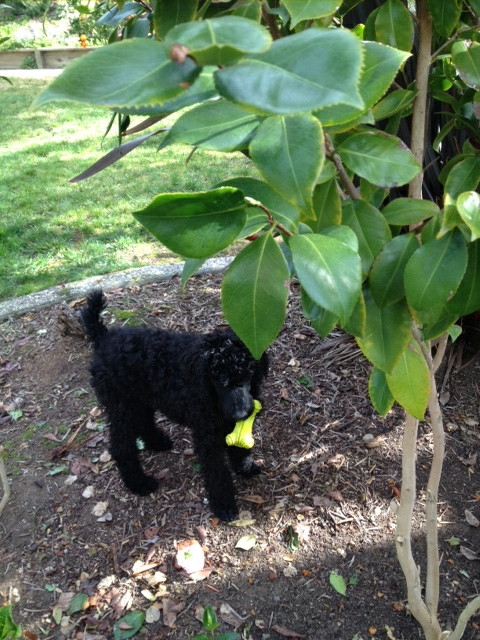Plant Chewing Puppy
It is about time to make some choices for my spring vegetable garden. Tomatoes come to mind first. Last year my tomatoes did well and I have been looking forward to trying a few newcomers this year. But, as I now have a puppy in the house, I thought “are tomatoes toxic to my new pup, Marco ?”. This little guy hasn’t met a plant that he doesn’t want to chew. Soon after he entered our home, he made it clear that I needed to be aware of the hazards living in the backyard. He would come in from a romp in the yard with a mouthful of flower petals or twigs he pulled from a tree or bush.
I talked to my vet about Marco and his attraction to plants. He handed over a stack of literature. Among them was a pamphlet published by the ASPCA with lists of foods and plants that can be harmful to our pets. This pamphlet was the beginning of my quest for more information on toxic plants. I found a number of websites including www.petpoisonhelpline.com and www.ASPCA.org/pet-care/poison-control that were very informative and helpful as I inventoried the plants in my backyard, then researched each one for toxicity information. These sites also provided details on the mechanisms of toxicity. You would think that I would have known better. But no, I was shocked to find that a good number of plants in my yard were indeed toxic to my new housemate.Well, I now have some happy neighbors with many plants in the Liliaceae family, my Hydrangeas, many Euphorbias, and Nandina domestica ‘Compacta’now planted in their yards. I expect as Marco grows out of his puppy-hood, he will be less attracted to the plants for chew toys. But who knows, and in the meantime I have peace of mind that he won’t get sick from these plants. Even though, these websites and reference manuals have multiple tables and lists galore, of toxic plants. There are so many plants coming into the nurseries . At this point if I can’t find information on a plant, I assume it could be toxic and won’t purchase it.
So now, back to the tomatoes and other vegetable potentials for my spring garden. This time I started with the handbook provided during my Master Gardener training back in 2009, The California Master Gardener Handbook, a University of California, Agriculture and Natural Resource publication. And yep, right there on page 643 is a table of Vegetables that Contain Natural Toxins. And yes, tomatoes are on the toxic list. In the case of Solanum lycopersicum, aka tomatoes, The toxic parts of the tomato are the leaves, stems and green tomatoes . So know I go to the www.petpoisonhelpline.com to get the scoop on tomatoes. This site provides the following: The tomato is poisonous to cats, dogs and cows. Common signs to watch for are vomiting, diarrhea, lethargy, weakness and confusion. The ripened fruit of the tomato plant is considered non-toxic but the green parts of the plant contain solanine, a glycoalkoloid. Solanine is also found in many other plants in the Solanaceae family including the potato plant (green parts only). Typically, when ingested by dogs and cats it rarely results in toxicity. A large amount needs to be ingested (e.g.typically in cattle) for solanine to result in severe poisoning. . As I read it, the plants probably won’t kill my pup, just make him sick. So for this spring I think I will skip the tomatoes and go to Larry Produce for my annual tomato canning frenzy.

Marco, plant-eating puppy. photo by Trisha Rose

